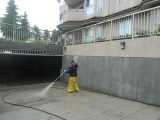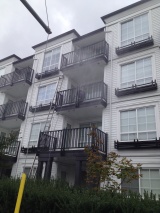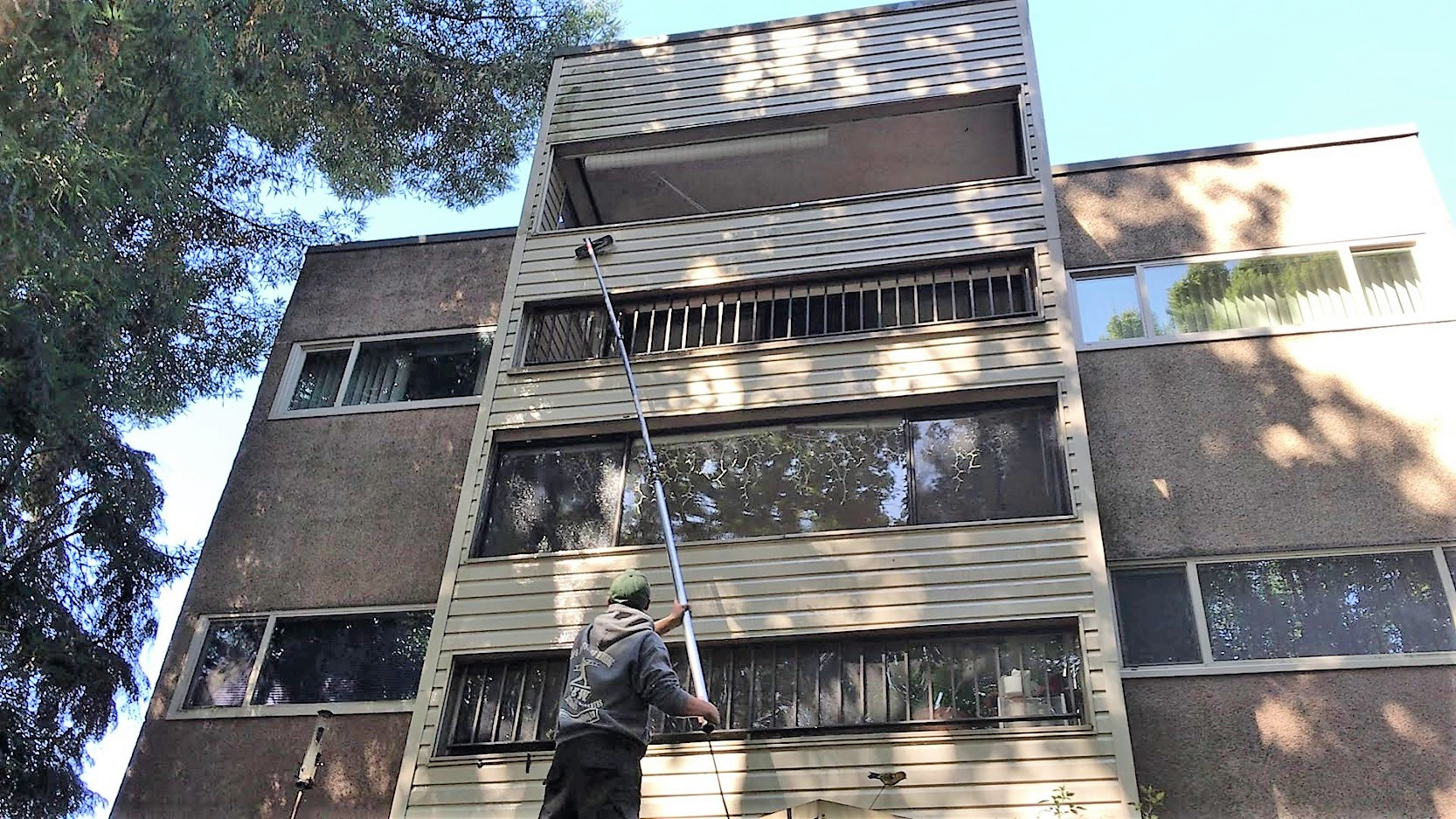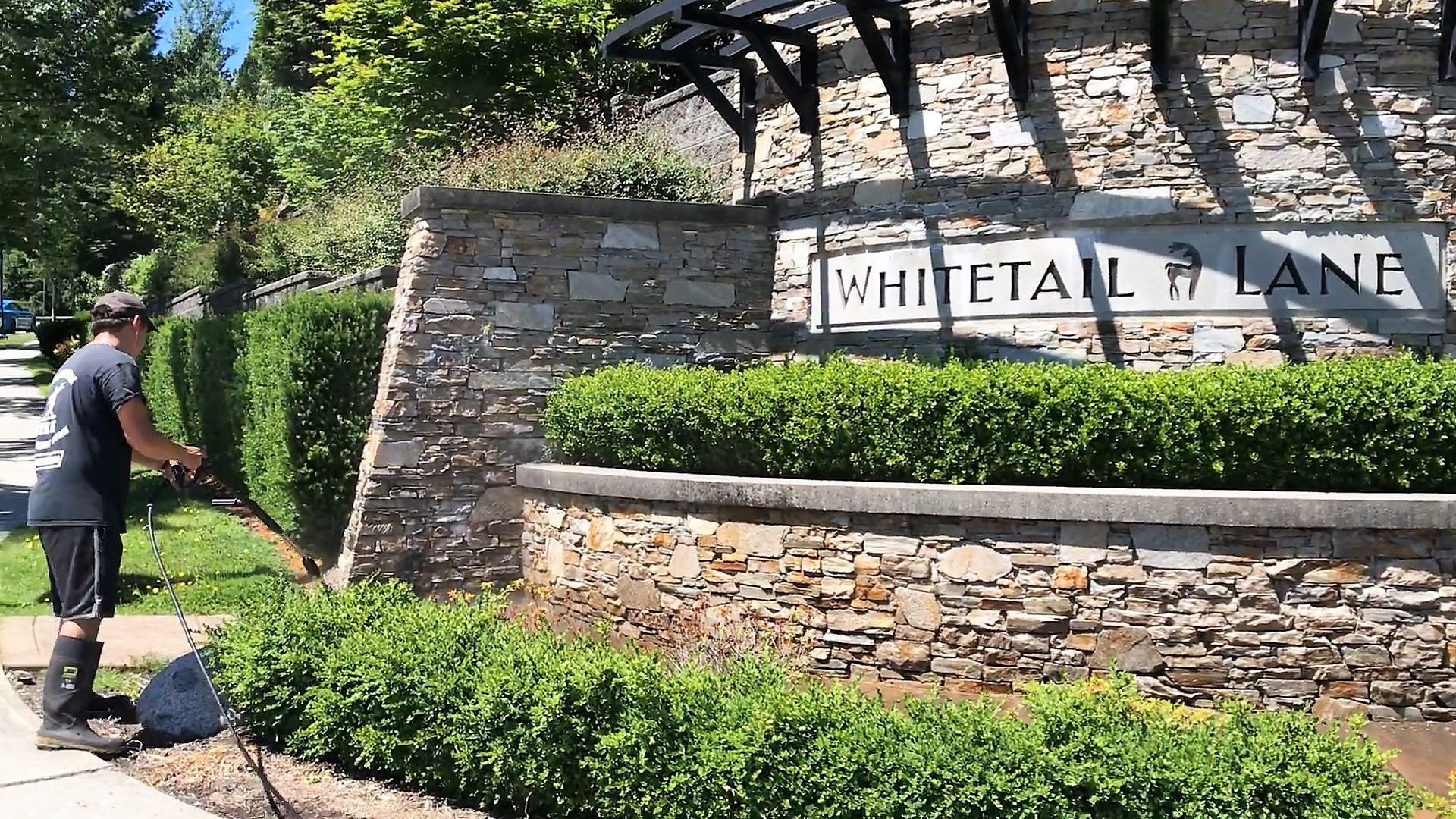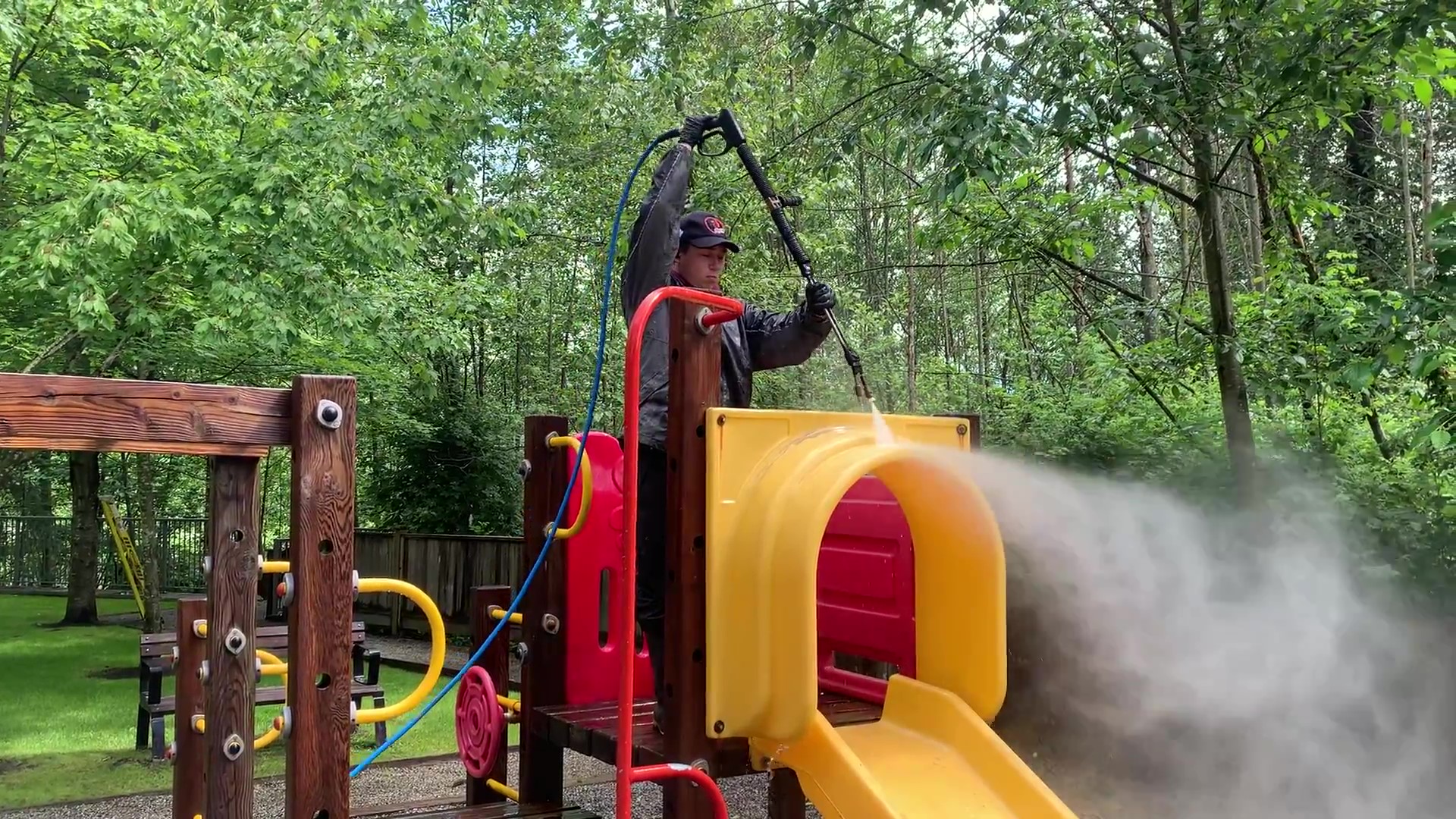FAQ
Power washing is not recommended, since the water will enter behind the siding and penetrate windows seals and damage walls. Your local power washing company will state they power wash down the wall and not up. You must ask yourself than, how do they clean the under lip of the vinyl siding, where the weep holes are located. We will brush wash the vinyl siding with a soft bristle brush using a bio-degradable all-purpose cleaner and degreaser, which is a safe and more efficient way to clean vinyl siding. Vinyl siding does need cleaning on a periodic basis to remove moss and mold that grows mostly on the North side of most residential homes and buildings. The moss appearance is green in colour, but if not removed will turn into a black fungus that is more difficult to remove.
Regular visual inspection and maintenance of our roof is needed to maximize the life expectancy of the roofing system. Roofs are exposed to the sunlight, rain, snow, hail, wind, and temperature changes that gradually breakdown the roofing system. Also, tiles tend to slide down due to the roof installer neglecting to support the tile with nails. All roofs require regular inspection and maintenance by a professional roofing inspector or contractor as it involve specialized knowledge, equipment, training and safety requirements. Roofs should be inspected every two to three years and professionally cleaned every three to four years. We can inspect entire roofs for cracks, sliding tile gaps, and separating top caps on roof.
Asphalt roofs should never be power washed. The force of water can remove the surface or break way pieces of material causing immediate leaks or shorten the service life of the roof system. Removal of existing moss growth can be scraped or swept off with a broom at the time when the moss growth is dormant. It is nearly impossible to physically remove all the moss roots and small pieces from a roof surface, and being quite hardy the moss and algae will re-grow from whatever is left. We can control buildup of moss by spraying on a moss and algae removal product. Installing zinc strips will also reduce moss and algae growth, however, the effectiveness of strips will vary with the surface area of the strip and the amount of water running over it.
After the leaves fall in autumn, remember to clean the gutters. In fact when they're plugged with debris of all kinds (leaves, branches, etc.) they cannot fulfill their purpose which is very important during the raining season. Gutter sections are hung a certain way, in order for water to flow towards the downspouts. If gutters are not cleaned, the weight of the water and debris will change the alignment of the gutter, therefore, water will not flow properly to the downspouts. Winter weather conditions can cause gutters and downspouts to fill with ice and be damaged beyond repair or torn off the house due to the increase weight of frozen water. In addition, at every downspout there is a trap that stops debris from entering the weeping tile system. These traps are usually made of plastic and over time deteriorate and let debris enter into your weeping tile system. Once this happens, they should be replaced with metal traps, which are more durable than plastic. We can install gutter traps and reinstall gutters and hang them using the proper larger gutter screws.
Pressure washing removes slippery algae from pavement and decks to prevent dangerous slips and falls, which improves safety for everyone on the surface. It also prevents the growth from damaging the material itself and improves the appearance of the outdoor area.
Safety
- Reduces slip hazards: The slick film created by algae and other organic growth, such as mold and mildew, makes surfaces extremely slippery. Pressure washing removes this hazard, significantly reducing the risk of falls and injuries for family, guests, and pets.
- Prevents material damage: When algae is left to grow, it can trap moisture and become embedded in the surface, leading to rot or structural damage over time. Removing it with pressure washing helps prevent deterioration of wood or concrete, maintaining the integrity of your deck or patio.
- Asphalt driveway damage: Moss growing on driveways, especially asphalt driveways, can start to break it up and make tiny little holes. Eventually over time water will get into those holes and freeze during winter, causing expansion and doing more damage.
At JfB Pressure Washing we make it mandatory that all our employees wear full body fall protection, which is connected to an anchor that is permanently or temporarily attached to a structure.
WorkSafeBC Regulations:
The Occupational Health and Safety Regulation requires workers to use fall protection systems when they could fall from a height of 3 m (10 Ft.) or more, or where a fall from a lesser heigh could result in serious injury. A worker must wear a safety belt, a full body harness or other harness acceptable to the Board when using a personal fall protection system for fall restraint. An anchor is a key element of any personal fall protection system. An anchor may consist of a load-rated strap or sling wrapped around a substantial structural member on a building. An anchor may also be a manufacture component that permanently or temporarily attaches to a structure.
Yes you should keep your soffits clean for both functional and aesthetic reasons, as it improves the look of your home, helps identify early signs of damage, and prevents mold, mildew, and pest infestations. Regular cleaning also maintains the integrity of the soffit and fascia system, which protects your roof and attic from moisture and other external elements.
- Aesthetics: Clean soffits contribute to the overall neat and fresh appearance of your house.
- Damage Detection: Cleaning allows for inspection, helping you spot potential issues like cracking, misplaced soffits, or water damage before they become expensive repairs.
- Mold and Mildew Prevention: Accumulation of dirt, grime, and organic growth can lead to mold and mildew, especially if moisture gets behind them.
- Pest and Bird Prevention: Openings in soffits can become entry points for pests and birds, so inspections while cleaning helps keep these spaces secure.
- Structural Integrity: Soffits and fascias are crucial parts of the roofline, protecting the attic and roof from water damage. Regular cleaning helps maintain these protective functions.



